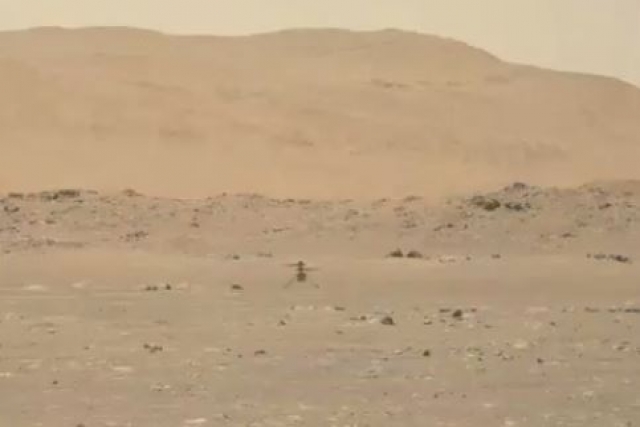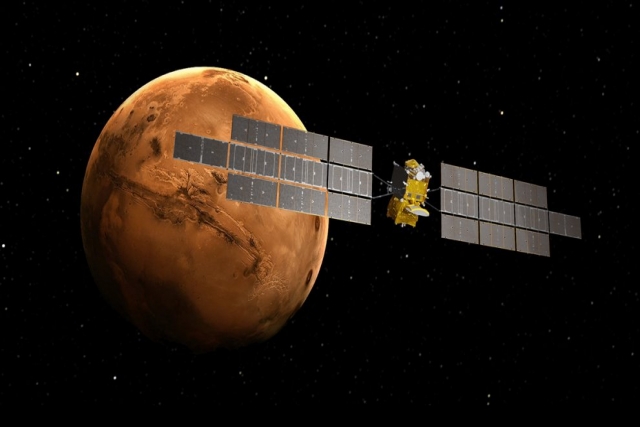China Second to Land Spacecraft on the Red Planet

An unscrewed Chinese spacecraft landed on the surface of Mars earlier today, making it the second country after the United States to do so.
State news agency Xinhua reported that the Tianwen-1 spacecraft landed on a site on a vast plain known as Utopia Planitia in the planet’s northern hemisphere, "leaving a Chinese footprint on Mars for the first time.”
On July 23 last year, Beijing launched a Mars probe designed to complete orbiting, landing and roving in one mission. China’s Long March-5 rocket carrying the spacecraft that weighs 5 tonnes blasted off to space from Wenchang Spacecraft Launch Site on the coast of southern China's Hainan province. It entered Mars’ orbit in February.
After circling the Red Planet for more than three months, the Tianwen-1 lander, with the rover attached, separated from the orbiter to begin its plunge toward the planet's surface. Once the lander and rover entered the red planet’s atmosphere, the spacecraft endured a similar procedure to the "seven minutes of terror" that NASA's Mars rovers have experienced when attempting soft landings on Mars.
A heat shield protected the spacecraft during the fiery descent, after which the mission safely parachuted down to the Utopia Planitia region.
Much like during NASA's Perseverance rover landing, Tianwen-1's landing platform fired some small, downward-facing rocket engines to slow down during the last few seconds of its descent.
The rover has landed on Mars. What now?
The rover will be released to conduct scientific exploration with an expected lifespan of at least 90 Martian days (about three months on Earth), and the orbiter, with a design life of one Martian year (about 687 days on Earth), will relay communications for the rover while conducting its own scientific detection.
The orbiter is equipped with seven kinds of scientific instruments: two remote-sensing cameras, Mars-Orbiting Subsurface Exploration Radar, Mars Mineralogy Spectrometer, Mars Magnetometer, Mars Ion and Neutral Particle Analyzer, and Mars Energetic Particle Analyzer.
The six-wheel solar-powered rover, looking like a blue butterfly with a mass of 240 kg, carries the Terrain Camera, Multispectral Camera, Mars-Rover Subsurface Exploration Radar, Mars Surface Composition Detector, Mars Magnetic Field Detector and Mars Meteorology Monitor.
The scientific goals of the mission include mapping the morphology and geological structure, investigating surface soil characteristics and water-ice distribution, analyzing the surface material composition, measuring the ionosphere and the characteristics of the Martian climate and environment at the surface, and perceiving the physical fields and internal structure of Mars.
The secret behind the name “Tianwen”
China National Space Administration (CNSA) announced that all of China's planetary exploration missions in the future will be named the “Tianwen” series, “signifying the Chinese nation's perseverance in pursuing truth and science and exploring nature and the universe.” The name was chosen from among 36,000 entries following an international contest to choose the name for the first Chinese research mission to Mars.
The name "Tianwen," based on a poem-Questions to Heaven, written by Qu Yuan (about 340-278 BC), one of the greatest poets of ancient China.













